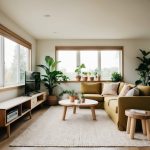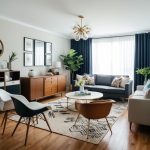Designing the Ideal Multi-Functional Guest Room on a Budget
Window Treatments for Privacy and Light
Window treatments play a crucial role in balancing natural light and privacy in a guest room. Curtains or blinds can be chosen to match the room decor while ensuring guests can enjoy a private retreat. Light-blocking options provide flexibility, allowing control over the amount of natural light entering the room.
Sheer curtains are an ideal choice for those who want to maintain privacy without completely shutting out sunlight. Consider dual-layer treatments, such as light-filtering shades paired with heavier blackout curtains, to provide options for various lighting preferences. Such solutions can be both stylish and functional.
Guest Amenities and Considerations
Thoughtful amenities enhance the guest experience, elevating the room’s comfort and practicality. A welcome basket containing toiletries, snacks, and bottled water can make visitors feel appreciated and cared for. Consider adding a set of fresh towels and easy-to-access charging stations for added convenience.
Ensure that bedside tables have adequate lighting for reading, with easy access to switches. Providing a small selection of books or magazines can be a considerate touch, offering guests entertainment during their stay. Small yet meaningful details create an inviting atmosphere at no great expense.
Incorporating a Home Office
Integrating a home office in a guest room requires a thoughtful balance between aesthetics and function. Making smart choices about desks and productivity aids enhances both comfort and usability.
The Dual-Purpose Desk
Choosing a dual-purpose desk can efficiently transform a guest room into a functional home office. Such a desk should provide sufficient workspace and storage without overwhelming the room. Opt for compact designs with retractable surfaces or built-in shelves to maximize space.
Consider a desk with a built-in charging station to prevent clutter from cables and chargers. An adjustable desk lamp adds versatility and enhances the workspace by providing adequate lighting for tasks. This approach ensures the room maintains an inviting feel while being fully functional as a workspace.
Maintaining Productivity
Maintaining productivity in a guest room home office can be achieved through thoughtful design choices. Select ergonomic chairs to encourage proper posture and reduce fatigue during work. Position the desk near a window if possible to take advantage of natural light, which can boost mood and focus.
Organize the workspace to include essentials, such as writing tools and notepads within arm’s reach, to avoid unnecessary distractions. Incorporate personal touches like artwork or a small plant to create a comfortable and motivating environment. These elements collectively support a productive atmosphere while preserving the room’s primary function as a guest space.
Lighting for Atmosphere and Function
Choosing the right lighting enhances both the ambiance and functionality of a guest room. Effective layering of different light sources allows for versatility, creating a welcoming and adaptable environment.
Choosing the Right Lighting Fixtures
When selecting lighting fixtures, it is essential to consider style and purpose. Ceiling lights provide comprehensive room coverage and set the tone for overall lighting. Floor lamps and table lamps offer focused light and can add decorative elements.
Wall sconces are great for accenting artwork or providing soft ambient lighting. They also save space, which is ideal in a compact guest room. Selecting fixtures with dimming capabilities adds flexibility, allowing guests to adjust lighting according to mood or activity. Ensure fixtures complement the room’s decor to maintain a cohesive aesthetic.
Layering Light for Versatility
A layered lighting approach balances form and function, accommodating various activities. Start with ambient lighting, the primary source that fills the room and establishes the mood. Overhead fixtures or chandeliers work well for this purpose.
Next, integrate task lighting using table lamps or desk lights, which provide focused beams for reading or working. Accent lighting, such as LED strips or track lighting, highlights architectural features or artwork, underscoring the room’s character. By layering light, occupants can tailor the atmosphere, ensuring the space is both functional and inviting.



